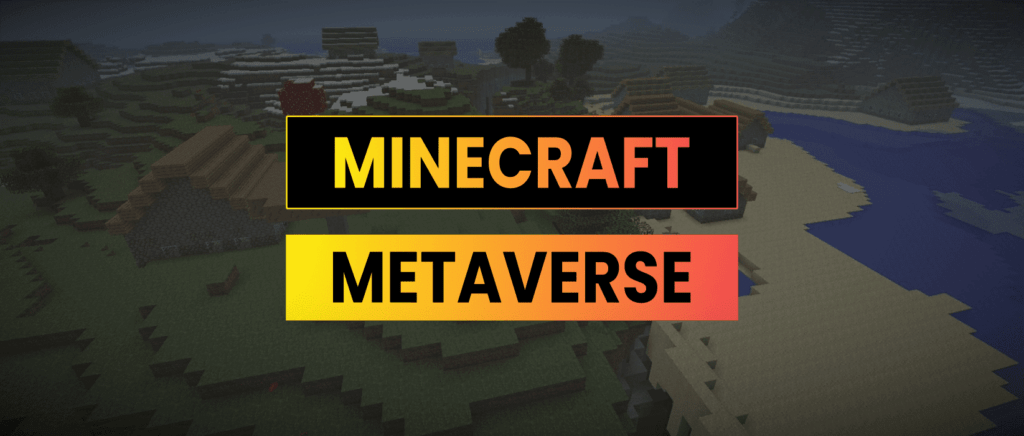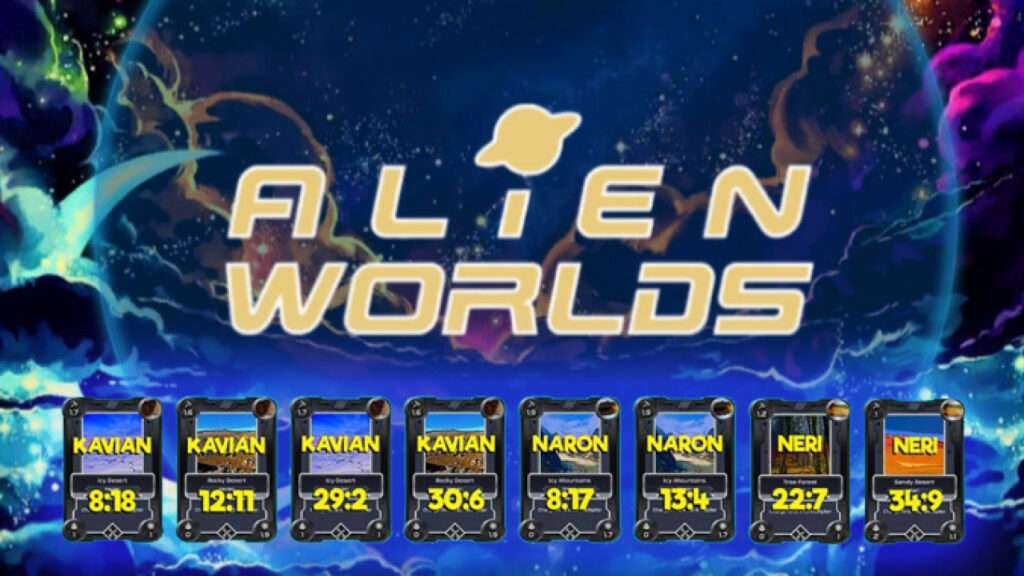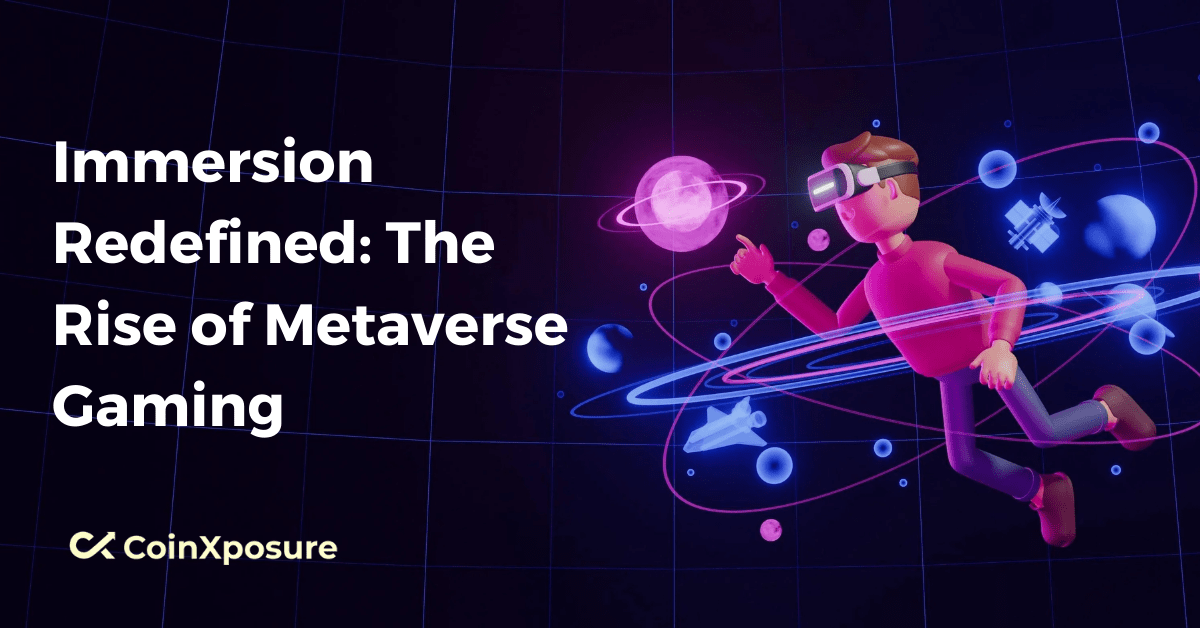In recent years, the gaming world has undergone a revolutionary evolution with the emergence of the Metaverse. This article takes a deeper dive into the rise of metaverse gaming.
Since the advent of artificial intelligence, the Metaverse has made waves in technology and virtual reality. The formerly inconceivable has suddenly become possible.
You can design an online universe in which you can walk on water or swim among the stars.
You may also have seen mention of the Metaverse in the Apprentice 2023 Final.
Finalists Marnie Swindells and Rochelle Anthony were tasked with developing a digital presentation of their proposed company spaces to present to Lord Sugar and a panel of industry experts.
The Metaverse is also gaining traction in the gaming community. Many companies are showing a new virtual reality world that exists alongside our physical world.
Before going into what metaverse gaming is, let us establish what the Metaverse itself is.
What is the Metaverse?
The Metaverse is a network of virtual platforms, such as playgrounds and collaboration spaces, enhanced with 3D elements and other cutting-edge technology to provide users with an immersive experience.
It is frequently referred to as a development of the Internet, utilizing decentralization and 3D rendering.
Synchronized virtual worlds, based on automation and mobilization concepts, provide scalability while instilling an individual sense of presence, stimulating collaboration, and maintaining data integrity.
This appeared to be an impossible task in prior years until systems such as Decentraland and Meta emerged.
A shared virtual ecosystem, accessible via VR and AR devices, is transforming crucial aspects of life, with the game sector at the forefront.
Now, what exactly is metaverse gaming?
What is Metaverse Gaming?
Metaverse gaming focuses on a more engaging and three-dimensional experience, cryptographic features such as tokenization and NFTs, and an improved user interface.
While VR and AR technologies are constantly available, Metaverse gaming systems can provide near-life experiences without requiring specific equipment. Metaverse systems, such as Meta, provide services on mobile devices.
Incorporating the Metaverse into gaming cyberspace is changing how players interact in these online spaces.
Before the advent of the decentralized Internet, games had no financial obligations and were less participative. NFTs and cryptocurrencies in the gaming scene are dramatically altering traditional gaming.
Players can pay and earn while participating in a more dynamic gaming environment.
Additionally, with interoperability in gaming cyberspace, players can transfer their avatars and in-game assets between platforms.
For example, the Metaverse gaming industry is expected to generate $1,500 billion in sales, explaining why Meta, previously Facebook, is investing up to $10 billion in its VR and Horizon Worlds projects.
AR, VR, and other technologies are being used to create a futuristic game world and experience, fueling the boom.
Actual-life characteristics such as content ownership and actual transactions have been integrated into the space, resulting in more realistic experiences.
Let’s see how metaverse gaming began.
The Rise of Metaverse Gaming
The metaverse concept is based on science fiction, which envisions a shared virtual realm transcending physical bounds. In the gaming industry, this idea became a reality as technology advanced.
Early manifestations included multiplayer online games, but the true Metaverse evolved with the combination of VR and AR technologies.
Games such as “Second Life” paved the way, allowing users to create, communicate, and socialize virtually.
The Impact of Metaverse Gaming on The Gaming Industry
The growth of Metaverse gaming is having a significant impact on the gaming industry.
The Metaverse offers a new platform for game developers to create and distribute games, altering how we think about and play them.
The Metaverse enables game producers to create more immersive, interactive, and compelling games.
In addition, the Metaverse is generating new business models and revenue streams. For example, in the Metaverse, players can purchase and sell virtual assets, resulting in a thriving new economy.
This emerging economy will likely expand in the following years, making it an exciting period for players and investors.
Let us also see the main components of metaverse gaming.
Components of Metaverse Gaming
These are some of the key technologies that fuel metaverse gaming.
- Internet of Things (IoT)
- 3D Modelling
- Decentralization
- Augmented Reality (AR) and Virtual Reality (VR)
- Cryptocurrency and Blockchain
Internet of Things (IoT)
The Internet as we know it is a seafloor of gems; the key elements simply need to be plucked and purified.
In a decentralized internet like the Metaverse, clear and accurate extracted data is critical, and IoT plays a significant role in demystifying complexity and generating an intuitive workflow.
A user-focused virtual platform can be developed quickly and easily using web-based gadgets and a network of connected computers.
Information gathered from integrated technologies such as sensors is utilized to accurately and efficiently duplicate 3D models of real-world objects and landscapes on virtual machines.
3D Modelling
Modeling online playgrounds with 3D reconstruction is not a new concept in game development, but it has taken a more intriguing and thrilling turn.
Accurately mimicking real-world goods on-chain creates a relatable atmosphere and experience for users, increasing demand for future iterations.
3D reconstruction goes beyond static 2D imagery by providing an in-depth focus and collecting virtual structures from multiple perspectives.
Using shading and lighting techniques, fascinating lifelike structures are produced and portrayed in the Metaverse.
Decentralization
The idea of a shared, evolved internet in which users can collaborate and play is based on decentralization.
Platforms such as Roblox allow developers in their network to create their digital settings and avatars, encouraging creativity and communal growth.
Communities sponsor most Metaverse initiatives, and the community members vote on DAO governance rules.
Augmented Reality (AR) and Virtual Reality (VR)
Augmented Reality and Virtual Reality are crucial technologies for giving a holistic experience to users and participants. To navigate the Metaverse, users wear high-tech goggles and headsets.
Notable corporations like Google and SpaceX have invested in these technology assets. These instruments are outfitted with sophisticated processors and amplified sensors to recreate real-world user conditions.
Visual and acoustic aspects enable consumers to have a completely immersive experience.
Cryptocurrency and Blockchain
As previously stated, the Metaverse is based on a decentralized internet.
Incorporating blockchain technologies opens up a world of possibilities, including the capacity to own and exchange virtual properties across platforms.
Asset ownership may be traced, promoting transparency and accountability. The technology’s immutability and anonymity enhance data protection and security.
Users may trade in-game items for real value through cryptocurrencies and NFTs, enriching their in-game experiences even more.
Features of Metaverse Gaming
Here are some features of metaverse gaming that you will experience while playing.
- Mixed reality
- Play-to-earn
- Interactive features
- Moveable game assets
- Flexible gaming experience
Mixed Reality
Metaverse gaming, often known as “phygital,” is based on merging the physical and virtual worlds. Users can move effortlessly from text groups to AI-powered gaming environments.
By cooperating with real-life businesses like Nike, players gain access to real-life goods in virtual environments, improving their gaming experience.
Play-to-Earn
Unlike the previous generation of gaming platforms, decentralized games are more than just for amusement and relaxation.
With genuine trade aspects, users may gain value by competing in online tournaments and earning rare in-game items.
Most platforms, including Axie Infinity and Roblox, allow players to engage in activities that make them money within the space, a concept known as play-to-earn.
Some of these platforms also have their cryptocurrencies, which serve as prizes and incentives for gamers to purchase assets on the platform or withdraw them in fiat.
Interactive Features
Metaverse offers players an immersive gaming experience that takes them beyond traditional gaming. Players can navigate digital worlds and engage with other users like in real life.
VR and sensory technologies help to create a realistic experience. The possibilities in this dynamic environment are limitless, ranging from online asset trading to virtual event participation and online combat.
Movable Game Assets
Metaverse employs a sophisticated internet architecture that transfers gaming assets such as NFTs, avatars, and rare items between platforms. However, this capability is subject to gambling regulations.
Flexible Gaming Experience
In addition to collaborative benefits, some platforms allow users to create virtual spaces within the platform, allowing them to develop and own their content and assets.
This adaptability improves the overall play experience in the Metaverse.
Next, we will see the various metaverse gaming platforms offering these thrilling experiences.
Metaverse Gaming Platforms
Here are some metaverse gaming platforms to play in.
- Axie Infinity
- Epic Games
- The Sandbox
- Mine craft
- Alien Worlds
Axie Infinity

Axie Infinity, developed by Sky Mavis and debuted in 2018, provides a vast 3D virtual playground where users may groom and train their virtual pets, known as Axies, before trading them or sending them to battle other gamers.
This network has its cryptocurrency, AXS, which has lost some value owing to hacking. However, the platform continues to provide its customers with a fully immersive gaming experience.
Epic Games

This is the originator of Fortnite, which was created in 2017 and offers a digital experience for developers and non-creatives by hosting virtual event spaces where users can attend concerts and parties.
Epic Games, including Sony and Microsoft, has made admirable efforts to incorporate Web3 elements such as NFTs and cryptocurrency into a gaming infrastructure.
Unlike other platforms, it prioritizes the gaming experience and treats everything as secondary.
The Sandbox

The Sandbox is a user-generated platform allowing users to design their avatars and virtual stuff. The platform features three products: VoxEdit, Marketplace, and Game Maker.
VoxEdit is a 3D modeling program that allows you to create virtual versions of real-world objects such as vehicles, landscapes, and animals.
You may trade these objects on the Marketplace for Sand, the platform’s money, and create 3D games on the Game Maker without needing code.
Minecraft

Do you remember playing Minecraft? This game allows users to create and explore a new 3D environment exactly how they picture it.
It was also one of the first games to feature a virtual economy, which allowed players to exchange in-game things. It’s a great example of a game that can help you comprehend the fundamentals of the Metaverse.
First and foremost, it is highly adaptable. This means that players can develop their content and share it with others, making adding fresh experiences to the game easy.
It also has a strong sense of community, promoting a sense of belonging. More crucially, it is constantly evolving, with new features introduced regularly.
Alien Worlds

Launched in 2020, it includes mining features. You can mine Trillium, the in-game currency, and vote on its governance based on how much of it you own.
It also allows players to own land on each of the game’s six planets while battling other players and earning tokens as prizes.
Final Thoughts
The future of Metaverse gaming promises both excellent prospects and problems. It elevates gaming from mere amusement to a possible source of revenue and a welcoming environment.
It is critical to leverage economic models and user interfaces. Companies must understand the underlying technology and navigate hurdles to realize the promise of Metaverse gaming fully.












